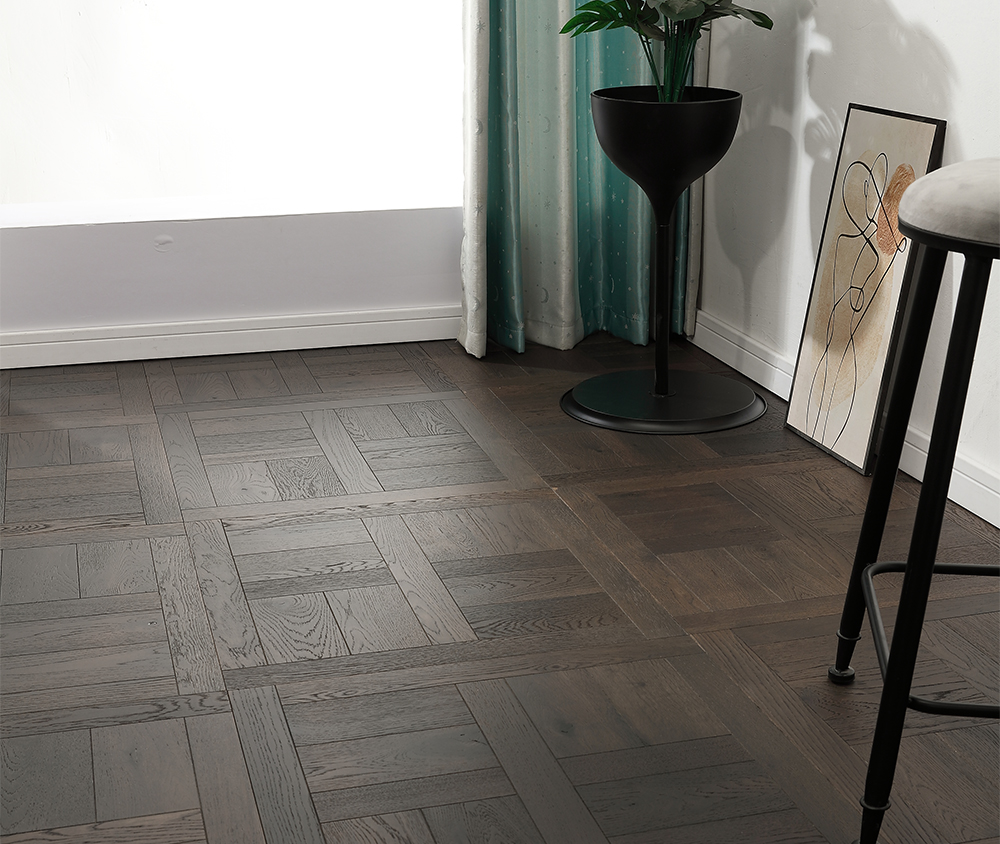- This topic is empty.
-
AuthorPosts
-
2025-03-31 at 3:03 pm #83953
Parquet flooring has become a popular choice in modern home decoration due to its unique aesthetic design and high-end texture. However, although parquet flooring is impeccable in visual effect, some common problems are often encountered during the installation process. If you do not pay attention, it may affect the final effect and the life of the floor. This article will explore in depth how to avoid common mistakes in the installation process of parquet flooring to help everyone ensure a smooth installation and improve the user experience of the floor.
1. Choose the right floor material
Parquet flooring is usually made of solid wood, composite wood, and other types. Choosing the right material is the first step to avoid installation errors. Each material of flooring has different installation requirements, so pay special attention to the following points when choosing:
Temperature and humidity control: The nature of wood determines its sensitivity to temperature and humidity. For solid wood parquet flooring, it is necessary to ensure that the temperature and humidity of the installation environment are moderate. If the indoor humidity is too high or too low, the wood floor will expand or contract, and eventually cause the floor to deform. Therefore, before installation, make sure that the floor is stored in the installation environment for at least 48 hours to adapt it to the humidity and temperature of the environment.
Grade and quality of flooring: There are many types of parquet flooring on the market, and the quality varies. Choosing high-quality, strictly screened parquet flooring can effectively avoid installation problems caused by defects in the material itself. When purchasing, you can identify the quality of the floor by observing whether the wood grain is uniform, whether the surface is smooth, and the thickness and density of the floor.

2. Inadequate preparation
Before installing parquet flooring, adequate preparation is the key to avoiding mistakes. One of the most common mistakes in preparation is not adequately checking and cleaning the floor.
Uneven floor: Before installing the floor, you first need to check the flatness of the floor. An uneven floor will directly affect the installation effect of parquet flooring, resulting in uneven floor gaps, loose or bulging floors, etc. You can use a level to detect the unevenness of the floor and ensure that the floor is flat. If the floor has large bumps and bumps, it is best to level it first and use cement or self-leveling materials to trim the floor.
Clean the floor: Before installation, be sure to remove dust, debris and oil stains on the floor. If there is moisture or oil on the ground, the floor will not fit well with the ground, which may cause looseness or warping after installation. In addition, cleaning the floor helps the firmness of the adhesive material (if used).
Measurement and planning: Before installing parquet flooring, sufficient measurement and planning must be carried out. According to the size and shape of the room, the laying direction of the floor should be reasonably planned. Generally, parquet flooring is best laid along the light or main viewing direction of the room, which can make the texture and parquet effect of the floor more natural and smooth.
3. Wrong installation method
There are many ways to install parquet flooring, among which the most common ones are click-type (lock) installation and glue-type installation. Different installation methods require different techniques and tools. If the installation is improper, it is easy to cause a poor parquet effect and even affect the stability of the floor.
The lock is not firmly spliced: For parquet flooring spliced by click-type (lock), many people ignore the docking method of the lock, which causes the edge of the floor to loosen during splicing, affecting the overall stability. During installation, be sure to ensure that the lock of each floor is tightly docked, and use special tools (such as a lock hammer) to gently tap the joints of the floor to ensure that the joints are flat and tight.
Improper use of glue: For glued parquet flooring, glue must be used in the proportion and method recommended by the manufacturer. Too much glue may cause excess adhesion between the floorboards, resulting in the inability of the floorboards to breathe naturally after installation and expansion; insufficient glue will cause the floorboards to be loose and easy to loosen. When applying glue, be sure to apply it evenly to avoid glue overflow.
Lack of expansion joints: Whether it is solid wood flooring or composite wood flooring, expansion joints are required during installation. This is because wood has the characteristics of expansion and contraction. If not enough expansion joints are left during installation, the floor will warp and deform after being heated or wet. Usually, the expansion joints around the perimeter need to maintain a gap of 5-10 mm to ensure that the floor can expand freely.
4. Ignore the direction and pattern of the floor
A unique feature of parquet flooring is its pattern design. During installation, if the direction of the floor pattern is ignored or the coordination of the splicing is not paid attention to, the final aesthetic effect will be affected.
Misaligned parquet pattern: Parquet flooring usually has complex patterns or geometric shapes. When installing, ensure that the patterns or wood grains of each floor are aligned. If they are not aligned, it will affect the visual effect of the entire floor and make the parquet pattern look messy. To ensure a smooth connection of the pattern, you can lay the floor and dry-lay it before installation to check the matching of the pattern.
Misaligned laying direction: In addition to the alignment of the parquet pattern, the laying direction of the floor will also affect the overall effect. Usually, parquet flooring should be laid along the direction of light or sight. The wrong laying direction may cause the texture of the floor to appear unnatural, which in turn affects the beauty of the entire room.
5. Neglecting post-care and maintenance
The installation of parquet flooring is only the first step, and post-care and maintenance are equally important. After installation, neglecting maintenance will cause the floor to wear or damage quickly, thus affecting its service life.
Improper cleaning and maintenance: When cleaning parquet flooring, avoid using too much water, because too much water can easily penetrate into the gaps in the floor, causing the wood to swell and deform. Use a slightly damp cloth to gently wipe the floor, and avoid using hard brushes or highly corrosive detergents. Clean the floor of dust and debris regularly to prevent small particles from scratching the floor surface.
Avoid scratches from heavy objects: Although parquet flooring is strong, it is still necessary to avoid scratches from heavy objects or collisions with sharp objects during use. Protective pads can be installed under the feet of furniture to reduce friction and pressure on the floor.
Installing parquet flooring is a process that requires carefulness and patience. Only when the right materials are selected, adequate preparations are made, the installation plan is carefully planned, and the subsequent maintenance is properly done can the beauty and durability of the floor be ensured. By avoiding the common installation mistakes mentioned above, we can effectively extend the service life of parquet flooring while improving the overall quality of the home space. In actual operation, it is recommended to seek the help of professional installers when you are unsure to ensure the best installation quality.
http://www.boruiwoodfloor.com
Borui floor -
AuthorPosts
- You must be logged in to reply to this topic.


